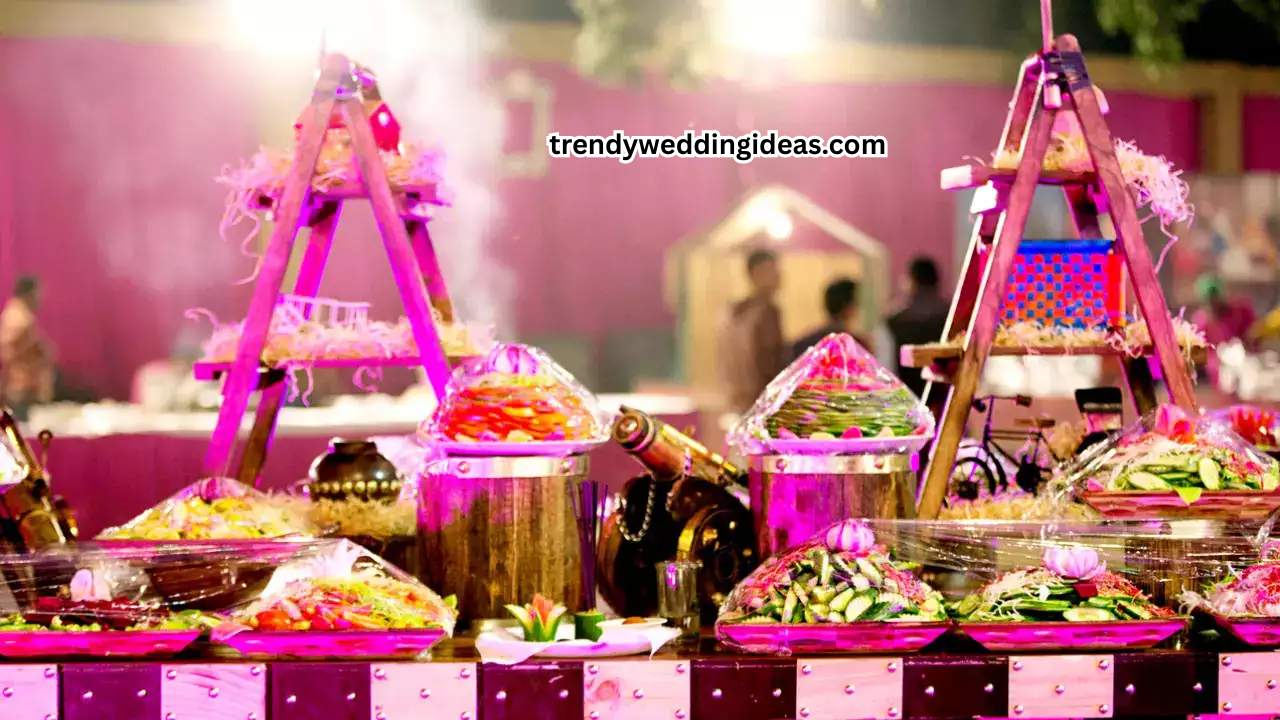Weddings are evolving, and couples today are embracing unique, personalized celebrations that reflect their diverse backgrounds and values. Two major trends leading this shift are multicultural weddings and self-catering weddings.
A multicultural wedding blends traditions, rituals, and aesthetics from different cultures, creating a rich, inclusive celebration. Meanwhile, a self-catering wedding gives couples more control over their budget and menu, often resulting in a more intimate and personalized experience.
In this comprehensive guide, we’ll explore:
- The beauty of multicultural weddings and how to plan one
- The benefits and challenges of self-catering weddings
- Creative ideas to merge both concepts seamlessly
- Practical tips for budgeting, logistics, and guest experience
1. The Rise of Multicultural Weddings
Why Couples Are Embracing Multicultural Celebrations
Today’s couples often come from different cultural, religious, or ethnic backgrounds. Instead of choosing one tradition over another, many are blending elements from both sides to create a wedding that honors their heritage while feeling uniquely “them.”
Key benefits include:
- Inclusivity – All families and guests feel represented.
- Uniqueness – A wedding that stands out with diverse rituals.
- Personalization – A celebration that truly reflects the couple’s journey.
How to Plan a Multicultural Wedding
A. Combining Ceremonial Traditions
- Interfaith ceremonies – Incorporate rituals like the Christian exchange of vows with a Hindu saat phere (seven steps).
- Dual-language vows – Recite promises in both partners’ native languages.
- Fusion attire – A bride might wear a white wedding gown for the ceremony and switch to a lehenga or qipao for the reception.
B. Blending Cultural Decor & Themes
- Color schemes – Mix traditional hues (e.g., Indian red & gold with Scandinavian neutrals).
- Fusion tablescapes – Combine Chinese tea ceremonies with Italian family-style dining.
- Music & dance – Play a mix of cultural music, from salsa to Bollywood.
C. Handling Family Expectations
- Open communication – Discuss traditions early with both families.
- Compromise where needed – Some families may expect certain rituals, so find a balance.
- Educate guests – Include a program explaining different customs.
2. Self-Catering Weddings: A Budget-Friendly & Personal Approach
What Is a Self-Catered Wedding?
Instead of hiring a full-service caterer, couples (or their loved ones) handle the food and drinks. This could mean:
- Home-cooked meals (great for intimate weddings).
- Food trucks or pop-up stalls (for a casual vibe).
- Potluck-style dining (guests bring dishes).
Pros & Cons of Self-Catering
✔ Advantages:
- Cost savings – Catering can consume 30-50% of a wedding budget.
- Personalized menus – Serve family recipes or cultural dishes.
- Flexibility – No restrictive vendor contracts.
✘ Challenges:
- Logistics – Requires planning for storage, heating, and serving.
- Guest labor – Friends/family may end up working instead of celebrating.
- Food safety – Proper handling is crucial.
How to Pull Off a Self-Catered Wedding Successfully
A. Planning the Menu
- Choose make-ahead dishes (e.g., curries, casseroles, salads).
- Consider dietary needs (vegan, gluten-free, halal/kosher options).
- Hire help for serving – Even if food is homemade, staff can assist.
B. Setting Up a DIY Bar
- Batch cocktails – Pre-mix signature drinks in dispensers.
- Self-serve stations – A wine bar, chai station, or build-your own taco bar.
C. Renting Equipment
- Commercial warmers – Keep buffet dishes at safe temperatures.
- Disposable but elegant tableware – Bamboo plates or compostable cutlery.
3. Merging Multicultural & Self-Catering Elements
Idea #1: A Global Food Festival Wedding
- Different food stations representing each culture (e.g., sushi bar + pasta station + tandoori grill).
- Recipe cards for guests to take home.
Idea #2: A Family Potluck With Cultural Dishes
- Each side contributes traditional dishes.
- Display stories behind the recipes (e.g., “Grandma’s famous kimchi”).
Idea #3: Interactive Food Experiences
- Live cooking demos (making dumplings, tortillas, or dosas together).
- Dessert hybrids (matcha tiramisu, gulab jamun cheesecake).
4. Budgeting & Logistics for a Smooth Celebration
Budget Breakdown
| Category | Traditional Wedding | Self-Catered Wedding |
|---|---|---|
| Food | $5,000+ | 1,500−3,000 |
| Decor | $2,000+ | 500−1,500 (DIY) |
| Staff | $3,000+ | $500 (partial help) |
Timeline for a Self-Catered Multicultural Wedding
- 6 months prior – Finalize menu, recruit helpers.
- 1 month prior – Test recipes, rent equipment.
- 1 week prior – Prep freezer-friendly dishes.
- Day before – Set up stations, label dishes.
5. Real Couples’ Examples & Inspiration
Case Study 1: Mexican-Indian Fusion Wedding
- Ceremony: Catholic mass with a baraat (Indian groom’s procession).
- Food: Tacos al pastor + butter chicken sliders.
- Dessert: Churros with mango kulfi filling.
Case Study 2: Italian-Nigerian Potluck Wedding
- Guests brought jollof rice, homemade pasta, and plantain dishes.
- Entertainment: Afrobeat + tarantella dancing.
Final Thoughts
A multicultural self-catered wedding is a beautiful way to celebrate love while staying true to your roots and budget. By blending traditions, involving loved ones in food prep, and focusing on meaningful details, you can create an unforgettable experience.
Key Takeaways:
✅ Mix traditions – Honor both cultures without compromise.
✅ DIY wisely – Balance homemade food with hired help where needed.
✅ Keep it personal – The best weddings reflect the couple’s story.
Would you try a multicultural or self-catered wedding? Share your thoughts in the comments!
